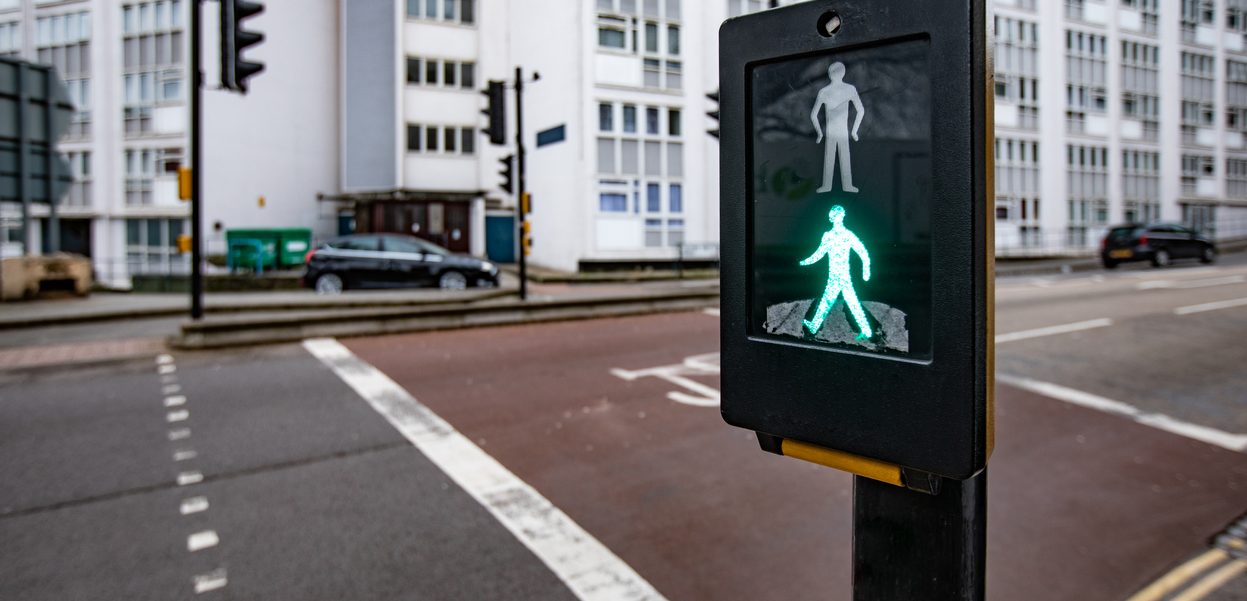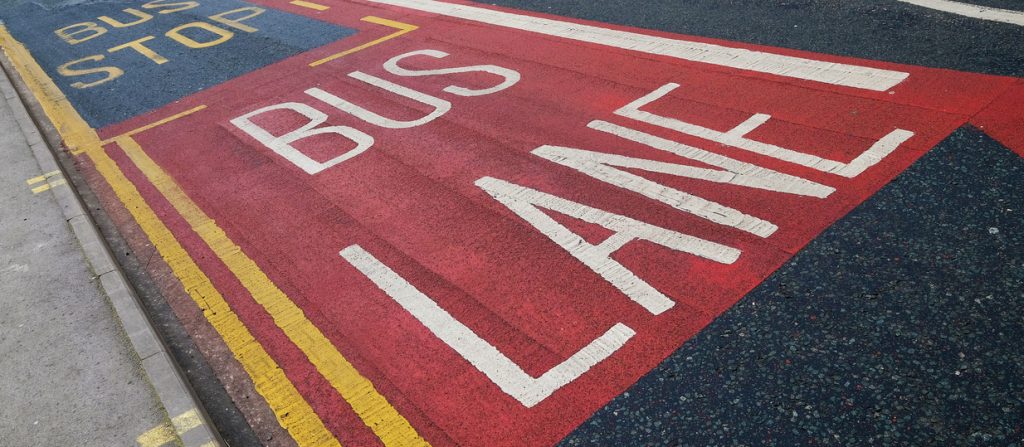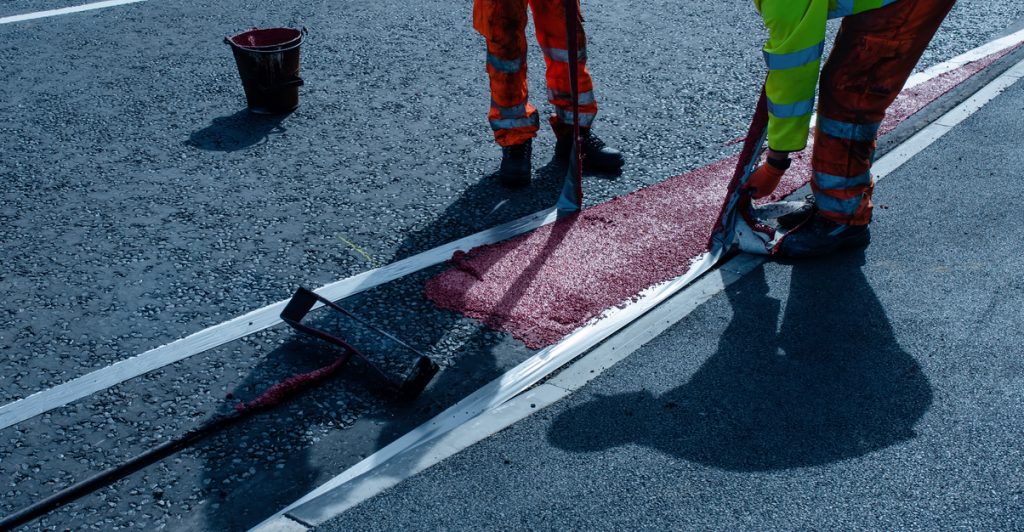Anti-skid surfacing is used for car parks, junctions, pedestrian crossings and other high-risk areas where increased surface friction and enhanced grip is important. In this article, we’ll be covering some popular anti-skid surfacing FAQs so you can get clued up on this essential road safety surfacing – including what it is, how to use it and how to apply it.

Anti-skid surfacing is a type of surfacing material that is applied to areas that require high skid resistance. Also known as high-friction surfacing, it is mainly used for areas where safety needs to be enhanced to prevent collisions, such as car parks and junctions. Instead of a smooth and slippery surface, anti-skid surfacing provides a surface with much greater friction when compared to asphalt, which reduces stopping distance and improves grip.
It’s important to ensure your anti-skid surfacing is applied by qualified, skilled professionals – that’s where Landmark Road Lining comes in!
Anti-skid surfacing is made from an aggregate called calcined bauxite, which is resistant to polishing and also has impressive anti-abrasive properties. When laid, the surface has many contact points which are formed by using a binder with the calcined bauxite. This results in a textured surface with a high degree of friction and improved grip called anti-skid surfacing. Anti-skid surfacing also tends to last a long time without getting worn down by frequent road use.

Due to its ability to increase road friction and safety, this surfacing choice is used for areas where the risk of road accidents and collisions is higher. These areas may include:
When researching anti-skid surfacing, you will discover there are two ways to apply the surfacing, either hot or cold. So what’s the difference?
Anti-skid surfacing has many advantages over traditional asphalt surfacing, including:
There is actually no difference between anti-skid surfacing and high-friction surfacing (sometimes abbreviated as HFS). They are simply different terms which refer to the same type of surfacing.

To ensure legally-compliant and safe application of anti-skid surfacing, make sure that it is laid by an experienced specialist. Here at Landmark Road Lining, we have over 30 years’ experience as a national expert in road line marking and painting. This includes the professional laying of anti-skid surfacing for car parks, bus and cycle lanes, walkways and roads. As a Constructionline silver member, we uphold high quality and environmental standards in line with ISO 9001 and ISO 14001, and are happy to serve customers across the UK.
With over 30 years of industry experience, the team at Landmark Road Lining is here to offer marking and surfacing services to customers throughout the UK. We are fully experienced at laying anti-skid surfacing for local authorities and commercial customers, using both hot and cold application methods. Get in touch to discuss your project with our friendly team.
Call us today on: 0808 196 4779Fill in your details and we can call you back at a time that suits you.
By clicking “Accept All Cookies”, you agree to the storing of cookies on your device to enhance site navigation, analyse site usage, assist in our marketing efforts, and for personalised advertising.
This website uses cookies to enhance your browsing experience and deliver personalised ads. By clicking “Accept All Cookies”, you agree to the storing of cookies on your device to enhance site navigation, analyse site usage, and assist in our marketing efforts.


